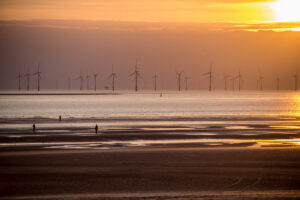Offshore wind puts the Philippines on the road to energy independence

OFFSHORE WIND is emerging as a possible “win-win” for the Philippines in its pursuit of energy independence. The country’s success will depend on clear regulations, strong incentives, early investments in grid capacity, and the political will to make it all happen.
Offshore wind can meet growing energy needs, while protecting our land.
With its lush and beautiful nature, both above and below the sea, the Philippines is balancing the development and environmental agendas. And like all nations, it faces the imperative to transition to cleaner sources of energy while protecting its precious, and limited, land resources.
Land scarcity is a problem, and offshore wind is one of the solutions. Food vs Energy vs Environment is a false choice — The Philippines can achieve greater security on all through good political craftsmanship.
When you combine increasing food security concerns with the growing demand for clean energy, it’s natural to explore ways of producing energy offshore, rather than on land. Offshore wind in Asia, Europe, and North America has reached 60 gigawatts (GW) to date, and another 315 GW is anticipated to be added to the global energy mix by 2031.*
Offshore wind is poised to be an abundant energy source in the Philippines, with potential for up to 178 GW according to the World Bank. It’s been identified as a viable energy solution that allows this country to protect its scarce land resources, boost local employment, and stimulate industrial growth.
Size matters in the offshore wind game.
To get to this point, the World Bank suggests the Philippines needs a government-sanctioned roadmap, supporting a minimum of 15 GW of operational capacity by 2035, 30 GW by 2040, and 50 GW by 2050. This level of government commitment will give offshore wind players the long-term assurance they need to make the necessary investments. It will also help the National Grid Corporation of the Philippines (NGCP) plan its own development, as the grid remains a critical limiting factor to expanding renewables.
By the end of the 2nd quarter of 2022, the Philippines Department of Energy (DoE) has awarded over 22 GW of service contracts for offshore wind. This is a good start, but a lot of work remains to secure a position as more than just a minor contributor in the larger offshore wind ecosystem. The Philippines is home to strong players in the energy industry, and the country must continue to partner with global leaders to successfully navigate the energy transition. By scaling offshore wind along the shores, the Philippines has the potential to create a national cluster that benefits both the local economy and national development.
We have a window of opportunity to build a thriving offshore wind industry.
If we look at mature offshore wind markets today, they deliver competitively priced energy with zero direct emissions. This did not happen by accident. Every thriving market for offshore wind has always started with a certain level of government support. It begins with a clear and agreed upon roadmap towards a defined target that in turn drives the regulatory agenda. Well-crafted regulation gives the assurance needed to encourage investment.
To attract capital and secure the development of a domestic renewables industry, offshore wind will require a form of feed-in tariff in the initial phase. The larger the scale and the greater the visibility on the regulation side, the lower the tariff can be. However, there is no way around the fact that the first movers will require incentives from government to develop the industry. Thanks to the government support, the offshore wind power costs have fallen dramatically in recent years in the UK. In the latest auction, prices dropped 5.8%, and is a quarter of the current spot price.
Developing the domestic offshore wind industry will require upgrades of not only the national grid, but also the country’s ports, domestic shipping capabilities, sea-traffic management and much more — all with a keen eye to protect the rich and beautiful underwater environment surrounding the Philippines. In addition to Department of Energy and Department of Environment and Natural Resources, the Maritime Industry Authority and the Philippine Coast Guard should also be involved.
Support from the local government is also crucial to the success of offshore wind. From a regulatory and political perspective, they are an essential enabler in ensuring everything is in place to succeed. National, provincial, and municipal governments must work together to harmonize regulations.
With the build-out of offshore wind comes the need to take care of the aquatic life around the infrastructure. It requires research and mapping of the biodiversity and the migratory routes for aquatic life and birds. This enables the offshore developers to deliver the projects in a responsible and sustainable manner.
When it comes to the local fisheries in the Philippines, we see some clear advantages connected to offshore wind. While the construction period for the offshore structures may reduce catch levels temporarily, the large number of structures installed act as artificial reefs and can help boost biomass generation in the project areas.
The potential is enormous, but time is of the essence.
The Philippines is a country rich in offshore wind resources. It has a strong maritime legacy. It is home to highly capable local industries. And it’s a country that has long welcomed global partners to help it progress. These factors combined make the Philippines the ideal setting for a thriving offshore wind sector, and the country is well-positioned to extract significant value from this energy resource.
Offshore wind has the potential to put the Philippines on the road to energy independence. We see that a crucial enabler for offshore wind success in the Philippines will be finding the right partners who understand and respect Filipino culture, history, and legacy. The future offshore wind sites will become important infrastructure for the country’s future, and its development must be done in a way that is respectful and profitable for all.
*Global Wind Energy Council, annual report 2021
Torbjørn Kirkeby-Garstad is the General Manager Southeast Asia, Scatec. Scatec has a joint venture with Aboitiz Power: SN Aboitiz, and is aiming to develop 2.4 GW of offshore wind in the Philippines over the coming years.




